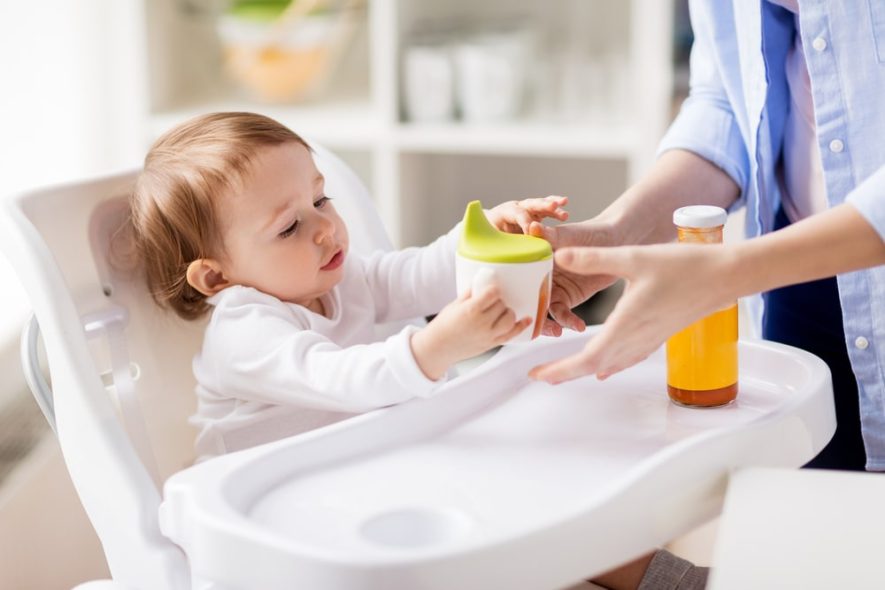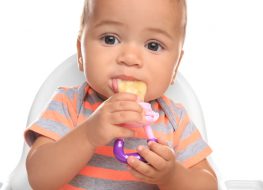
Bottle feeding can be an excellent option for parents looking to wean their baby off breastfeeding. But while bottle feeding has proven to be a good solution in the first months of a baby’s life, it can be detrimental to their health in the long run. To be safe, you’ll need the best cups to transition from bottle feeding.
Here’s how prolonged bottle feeding can be inadequate for your baby’s health and the proper alternatives.
How Can Bottle Feeding Be Bad for Your Baby?
Prolonged bottle feeding can be inadequate for your baby in many ways, particularly for their health. Here are some health issues that could arise from prolonged bottle feeding.
Tooth Decay
Because of the excess sugars in baby formulas, there is a high chance that bottle feeding can lead your child to tooth decay. Baby teeth do not fare well when exposed to too much sugar since sugar brings acid as a waste product.
Keeping your child from bottle feeding or limiting it in later months could prevent tooth decay. It’s also essential to clean your baby’s tongue frequently since the same sugars can cause fungal diseases in your baby’s mouth.
Crooked Teeth
In addition to tooth decay, bottle feeding can also physically affect your baby’s teeth. Crooked teeth arise when your baby bottle feeds too often. The bottle nipple affects the growth of their teeth and disrupts their natural growth.
Pacifiers can affect your baby the same way. If you want your children to grow up with a neat row of teeth, you should consider bottle-feeding alternatives that will allow your baby’s teeth to grow naturally.
Speech Delays
Bottle feeding also affects your baby’s palate. Since bottle nipples take up most of their attention, babies miss out on the chance to practice their oral motor skills, preventing them from learning how to pronounce the appropriate sounds.
Crooked teeth can also contribute to speech delays since teeth play a significant role in pronunciation. Weaning your baby from the bottle could save them a lifetime of speech trouble, so avoid prolonging bottle feeding.
Iron Deficiency Anemia
Bottle feeding doesn’t just affect your children physically; it can also be detrimental to your baby’s nutrition. One of the downsides to using a bottle for too long is that it replaces nutritious food with baby formula, even when your baby might need more nutrients, like iron.
Iron deficiency anemia arises from a lack of iron in a baby’s nutrition, and missing iron in a baby’s diet can lead to complications in how the blood carries oxygen. Leaving iron deficiency anemia untreated can lead to delayed growth in babies and possible heart conditions in the future.

What Cup Is Best After Bottle Feeding?
Instead of baby bottles, parents can transition their babies to sippy cups. Sippy cups or transition cups are cups designed for babies to learn how to drink properly from a regular glass. A baby can sip liquids from the cup with its soft spout and spill-proof lid; using the cup’s handles, your baby can lift the sippy cup, simulating the proper way of drinking, all while sitting in their baby high chair.
When your child is around six to nine months old, you should introduce them to sippy cups. In some cases, you can introduce sippy cups sooner. When unsure, look for signs your baby is ready for bottle weaning, like:
- Holding up a bottle by themselves
- Sitting up straight by themselves
- Having an interest in solid foods
- Having a proper mealtime routine
How Can Sippy Cups Help Babies?
The use of sippy cups goes beyond a baby’s nutrition; continuous use can also improve your baby’s physical development. Here are a few ways using sippy cups during your baby’s mealtime can help in their development.
Improves Hand-Eye Coordination and Motor Skills
A sippy cup is your baby’s introduction to proper drinking, which is difficult for toddlers. Having your baby hold onto a sippy cup allows them to train their hand-eye coordination and motor skills. With enough practice, they’ll be drinking without spilling the cup’s contents. And even if they do, your baby’s spill-proof sippy cup will be ready.
Improves Oral Motor Skills
We already know that bottle feeding can be detrimental to the development of your baby’s mouth. When used for too long, a baby bottle could deform your baby’s teeth and lead to an underdeveloped palate. Sippy cups are the complete opposite: they are not only safe for your baby, they can help develop your baby’s oral motors, too!
Oral motors are in charge of the movements of the jaw, mouth, and lips. Drinking from a sippy cup enhances a baby’s ability to use these motor skills since the same organs are involved in the act of sipping. Consequently, letting your baby drink from a sippy cup decreases their chances of developing dental and speech problems as they grow up.
What Sippy Cup Is Best for Transitioning?
While all are helpful in their ways, what sippy cup is best for transitioning? To help you decide, we’ve broken down each type of sippy cup and its benefits.
Soft Spouts
A soft spout is the best option for babies starting out with sippy cups. Soft spout sippy cups have soft, flexible spouts attached to them. Babies drink from the soft spouts by sucking liquids from the cup.
Straw Sippy Cups
On the other hand, a straw sippy cup is similar to soft spout sippy cups but requires more practice. The sippy cup’s straw spout works the baby’s tongue, cheek, and lip muscles to practice oral motor strength. This spoutless cup works well for toddlers with more experience with sippy cups.
Spoutless Sippy Cups
A spoutless sippy cup works just like a regular cup, except it has a lid to prevent spills, making a spoutless cup function like a training cup. Once your baby has had enough experience holding sippy cups, upping the challenge could be an excellent next step.
Stainless steel sippy cups or glass cups can also serve as an excellent challenge for your baby. Just make sure they’ve had enough practice holding on to heavy things. After a while, you’ll be surprised at how effortless it can be for your baby to drink from an open cup!
Hard Spout Sippy Cups
Hard spout sippy cups work for babies that drink from sippy cups on a regular basis. Hard spouts encourage your baby to lift up the sippy cup and tilt their head back to drink. Teaching your child how to drink this way further trains their range of motion and improves their handle on their motor skills.
![]()
Cleaning Your Baby’s Sippy Cup
If you want your baby’s oral health to stay in great shape, cleaning your baby’s sippy cups should be your number one priority. Cleaning sippy cups is pretty simple since they’re dishwasher-safe.
Handwashing sippy cups is easy, too. Just make sure you scrub the edges thoroughly. For example, straw cups can get dirt between the cup’s crevices. Any foreign particles on your baby’s sippy cups can turn the best sippy cups into the worst sippy cups.
Ashtonbee’s Silicone Sippy Cup Lids for Babies
If you want to replace your baby’s bottle, why not try Ashtonbee’s silicone sippy cup lids for babies? The soft silicone spout on our lids is made from BPA-free food-grade silicone, making them the best first sippy cup for your baby.
Buy some of the best baby gear now, either from our page or our Amazon store, and be a part of our Ashtonbee family!


